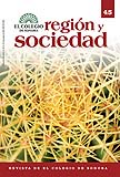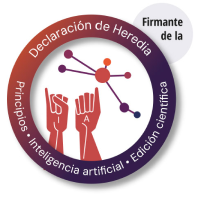Abstract
The economic changes in Mexico's productive sectors since the 1980s have caused the state of Sinaloa to become an ejector of qualified population, while at the same time attracting indigenous population. The protagonists of immigration and emigration in Sinaloa are different types of workers; the former consists mostly of underprivileged indigenous peasant groups from the southern part of the country, while the latter is made up of the state's educated endemic population, who choose to leave and move to the northern states of the country and to the United States in search of better prospects.
References
Brito, Pedro. 1994. Reestructuración productiva y desarrollo regional: el caso de Sinaloa 1982–1993.Tesis de maestría, El Colegio de la Frontera Norte.
Canales, Alejandro. 1997. Migración indocumentada en Estados Unidos: causas, efectos e interpretaciones. En La migración laboral mexicana a Estados Unidos de América. Una perspectiva bilateral desde México, compilado por la Secretaría de Relaciones Exteriores, 35–56. México: Secretaría de Relaciones Exteriores.
CONAPO. 2001. Índice de intensidad migratoria. México: CONAPO.
De Grammont, Hubert y Sara María Lara Flores. 2003. Jornaleros agrícolas y migración temporal. Este País (148): 63–68.
Granados Alcantar, José Aurelio. 2005. Las nuevas zonas de atracción de migrantes indígenas en México. Investigaciones Geográficas (58): 140–148.
––––––––––, Fernando Valdez Espinosa y Alfredo Veraztica Ontiveros. 1992. La soya y el Tratado de Libre Comercio. Tesis de licenciatura de Economía, Universidad Autónoma de Sinaloa.
Guerra, María T. 1998. Los trabajadores de la horticultura sinaloense. Culiacán: Universidad Autónoma de Sinaloa.
INEGI. 2008. Sistema de Cuentas Nacionales, producto interno bruto por entidad federativa 1993 –2006. Aguascalientes: INEGI.
––––––––––. 2008. Encuesta nacional de empleo. Aguascalientes: INEGI.
––––––––––. 2006. II Conteo de población y vivienda. Aguascalientes: INEGI.
––––––––––. 2003. México en el siglo XX, disco compacto, editado por INEGI.
––––––––––. 2001. Muestra del 10% XII Censo de población y vivienda. Aguascalientes: INEGI.
––––––––––. 2000. Resultados preliminares de XII Censo de población y vivienda. Aguascalientes: INEGI.
––––––––––. 1996. Cien años de censos de población 1995–1995. Aguascalientes: INEGI.
––––––––––. 1993. XI Censo de población y vivienda. Aguascalientes: INEGI.
Lozano Ascencio, Fernando. 1997. Remesas. ¿Fuente inagotable de divisas? Ciudades 35 (Julio–septiembre): 12–18.
Montoya Zavala, Erika Cecilia. 2004. La migración internacional y las remesas en Sinaloa: El caso de Leyva Solano, http://www.uasnet.mx/dcs/memorias/mesa3/pmesa3–5.doc (24 de octubre de 2008).
PNUD. 2008. Informe sobre desarrollo humano. México: PNUD.
Posadas, Florencio. 1985. Los jornaleros agrícolas de Sinaloa. Culiacán: Universidad Autónoma de Sinaloa.
SAGARPA. 2008. Servicios de Información Agroalimentaria y Pesquera (SIAP). www.siap.gob.mx.
Sobrino, Jaime. 2004. Competitividad de las ciudades en México. México: El Colegio de México.
Tello, Carlos. 1988. Informe sobre la crisis. México: Universidad Nacional Autónoma de México.
Villarreal, René. 1989. La contrarrevolución monetarista. México: Océano.
Open access policy
The authors who publish in región y sociedad accept the following conditions:
In accordance with the copyright laws, región y sociedad recognizes and respects the authors’ moral rights, as well as the ownership of property rights, which will be transferred to the journal to disseminate the articles in open access. región y sociedad does not charge the authors for submitting and processing articles for publication.
All the texts published by región y sociedad —with no exception— are distributed under a Creative Commons license 4.0 Attribution – Noncommercial (CC BY-NC 4.0 International), which allows third parties to use the publication as long as they mention the works’ authorship and the first publication in this journal.
The authors can enter into independent and additional contractual agreements for the nonexclusive distribution of the version of the article published in región y sociedad (for instance include it into an institutional repository or publish it in a book) as long as they clearly indicate that the work was published for the first time in región y sociedad.
For all the above, the author(s) must send the Letter of transfer of property rights of the first publication duly filled in and signed by the author(s). This letter can be sent by e-mail as a PDF to: region@colson.edu.mx




















